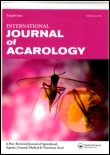
INTERNATIONAL JOURNAL OF ACAROLOGY
metrics 2024
Driving Discourse in Agricultural and Biological Sciences
Introduction
The INTERNATIONAL JOURNAL OF ACAROLOGY is a leading scholarly journal published by TAYLOR & FRANCIS INC, focusing on the multidisciplinary study of acari (mites and ticks) as well as their ecological and economic impact. With an ISSN of 0164-7954 and an E-ISSN of 1945-3892, this journal has been a pivotal resource since its inception in 1975, now converging into 2024 with an emphasis on high-quality research in the field. The journal currently holds a commendable Q2 ranking in Insect Science within the Scopus database, placing it at the 58th percentile among its peers. This emphasizes the journal’s credibility and relevance in advancing scientific understanding, making it an essential platform for researchers, professionals, and students alike dedicated to acariology and related disciplines. Although it does not provide open access, the journal's scope continues to drive significant discourse and innovation, promoting collaboration and the dissemination of critical findings in agricultural and biological sciences.
Metrics 2024
 0.45
0.45 0.90
0.90 1.10
1.10 35
35Metrics History
Rank 2024
Scopus
IF (Web Of Science)
JCI (Web Of Science)
Quartile History
Similar Journals
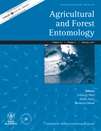
AGRICULTURAL AND FOREST ENTOMOLOGY
Elevating research on insect impacts in agriculture and forestry.AGRICULTURAL AND FOREST ENTOMOLOGY is a leading journal published by Wiley, focusing on the interface of entomology, agriculture, and forestry. With a robust impact reflected in its Q2 and Q1 quartile rankings in prominent categories like Agronomy and Crop Science, Forestry, and Insect Science, this journal serves as a vital platform for researchers and professionals seeking to advance their understanding of insect impacts on agricultural and forest ecosystems. Since its inception in 1999, it has provided a comprehensive collection of high-quality research, facilitating interdisciplinary discussions and innovations in pest management, biodiversity, and sustainable practices. Although it does not currently offer Open Access, the journal continues to uphold rigorous peer-review standards, ensuring that published works maintain a profound scientific value. As of 2023, its Scopus rankings further signify its prominence in the field, engaging a global audience keen on addressing the pressing challenges faced within agricultural and forest sciences.

NEMATOLOGY
Connecting Ecology and Agriculture through NematologyNematology is a prominent journal published by BRILL, focusing exclusively on the multifaceted realm of nematodes and their ecological, agricultural, and biological implications. With an ISSN of 1388-5545, this esteemed journal serves as a vital platform for researchers, professionals, and students dedicated to advancing knowledge in Agronomy and Crop Science and Ecology, Evolution, Behavior, and Systematics. Established in 1999 and continuing its mission until 2024, Nematology holds a Q2 ranking in Agronomy and Crop Science and a Q3 ranking in Ecology as of 2023, indicating its significant impact within these fields. Published in the Netherlands, this journal is accessible through various options, providing vital insights into nematological research and its applications. Researchers from around the globe are encouraged to explore, submit manuscripts, and contribute to the evolving discourse within this specialized yet pivotal area of study.

NEMATROPICA
Fostering Knowledge in Nematode ManagementNEMATROPICA is a distinguished academic journal dedicated to advancing the field of nematology and its relevance to agronomy and crop science. Published by the Organization of Tropical American Nematologists, this journal serves as a crucial platform for researchers, professionals, and students to disseminate original research and reviews focused on the biology, ecology, and management of nematodes within agricultural systems. With an evolving history since its inception in 1988, NEMATROPICA has consolidated its reputation, currently holding a Q3 classification in Agronomy and Crop Science for 2023, indicating its respected standing within the field. Although the journal is not open access, its valuable contributions underscore the importance of nematodes in ecological interactions and pest management strategies, making it essential reading for those committed to enhancing agricultural productivity and sustainability. The journal's contact address is Auburn University, Department of Plant Pathology, Auburn, AL 36849, United States.
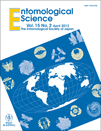
ENTOMOLOGICAL SCIENCE
Innovating Insights into Insect EcologyENTOMOLOGICAL SCIENCE, published by WILEY, stands at the forefront of research in the field of entomology, focusing on the intricate relationships between insects and their environments. With its ISSN 1343-8786 and E-ISSN 1479-8298, this esteemed journal, based in the United States, has been serving the scientific community since 2005. As a Q3 journal in both Ecology, Evolution, Behavior and Systematics and Insect Science, it presents vital peer-reviewed articles that advance our understanding of insects and their ecosystems. With a Scopus rank of 85/181 in Insect Science, the journal not only reinforces the importance of insect study but also serves as an essential resource for researchers and professionals seeking to explore and disseminate knowledge in this dynamic field. Although it does not offer Open Access options, its scholarly contributions are invaluable for those invested in ecological research and entomological perspectives—making it a must-read for aspiring and established scientists alike.

Ticks and Tick-Borne Diseases
Empowering researchers in tick ecology and epidemiology.Ticks and Tick-Borne Diseases, published by Elsevier GmbH, is a premier journal dedicated to advancing the field of infectious diseases related to tick-borne pathogens. With an ISSN of 1877-959X and an E-ISSN of 1877-9603, this journal has established itself as a leading platform for disseminating high-quality research, offering essential insights into the complexities of tick biology, transmission, and the diverse pathogens they carry. Recognized for its significant contributions, the journal holds a prestigious Q1 ranking in categories such as Infectious Diseases and Parasitology and maintains an impressive reputation with a Scopus rank of 16/181 in Insect Science. With publication spanning from 2010 to 2024, Ticks and Tick-Borne Diseases is crucial for academics, professionals, and students engaged in the interdisciplinary study of tick ecology, epidemiology, and control strategies. Submissions to this journal foster the exchange of ideas and encourage innovative research efforts, ultimately enhancing our understanding and management of tick-borne diseases on a global scale.
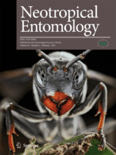
NEOTROPICAL ENTOMOLOGY
Exploring Neotropical Biodiversity, One Insect at a TimeNEOTROPICAL ENTOMOLOGY, published by the Entomological Society of Brazil, is a leading journal in the field of Insect Science, recognized for its significant contributions to the understanding of entomological research within the Neotropical region. With an impact factor placing it in the Q2 category and ranked #52 out of 181 in the Scopus rankings for Agricultural and Biological Sciences, this journal provides a vital platform for both seasoned researchers and emerging scholars to publish their innovative findings. Covering a broad scope of topics related to entomology, NEOTROPICAL ENTOMOLOGY aims to highlight the unique biodiversity and ecological significance of insects, fostering further appreciation and study within this crucial area of life sciences. The journal is available in both print (ISSN: 1519-566X) and online (E-ISSN: 1678-8052), ensuring accessibility to a wide audience and enhancing the dissemination of knowledge. As it converges towards its 2024 volume, the journal remains committed to advancing the scientific understanding of insect life in the tropics, making it an essential resource for researchers, professionals, and students alike.
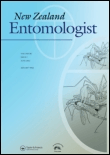
NEW ZEALAND ENTOMOLOGIST
Exploring the Wonders of Insect Life in New ZealandNEW ZEALAND ENTOMOLOGIST, published by Taylor & Francis Ltd, is a distinguished journal in the field of Insect Science, featuring a rich history dating back to its initial publication in 1952. As a platform for sharing innovative research and critical insights, this journal serves as a vital resource for entomologists and scientists interested in the diverse aspects of insect biology, ecology, and behavior. Although it currently holds a Q4 category in its discipline with Scopus ranking it at the 163rd out of 181 journals, the NEW ZEALAND ENTOMOLOGIST continues to uphold high-quality standards of peer-reviewed articles that contribute significantly to the understanding of insects, particularly within the unique ecosystems of New Zealand. Researchers and professionals are encouraged to submit their findings to enhance the journal's growing repository of knowledge, while students will find a wealth of information to aid their studies and foster their interest in entomological research.

BIOCONTROL
Fostering environmentally responsible practices in insect science.BIOCONTROL is a leading academic journal published by Springer, focusing on the intricate dynamics of biological control in agronomy and insect science. Established in 1998, this journal has effectively contributed to the field’s understanding of pest management and sustainable agriculture practices. With a commendable impact factor and category rankings placing it in the Q1 quartile for both Agronomy and Crop Science as well as Insect Science, it ranks among the top-tier journals in its domain. The journal is accessible to a broad audience, offering a comprehensive platform for researchers and practitioners to share innovative findings and methodologies. By fostering the advancement of knowledge in biological control, BIOCONTROL plays an essential role in promoting environmentally responsible practices that address contemporary agricultural challenges. Engage with the latest research and developments from the Netherlands and beyond, as we explore the future of sustainable agriculture in an ever-evolving landscape.

BULLETIN OF INSECTOLOGY
Championing Knowledge in Agricultural EntomologyBULLETIN OF INSECTOLOGY is a prominent academic journal published by ALMA MATER STUDIORUM, UNIV BOLOGNA, Italy, specializing in the field of Insect Science. The journal, with ISSN 1721-8861 and E-ISSN 2283-0332, has established itself as a vital resource for researchers and professionals interested in the diverse aspects of entomology and its applications. It ranks in the Q2 category for Insect Science as of 2023, placing it among the top journals in its field with a Scopus rank of 79 out of 181. The BULLETIN OF INSECTOLOGY is committed to disseminating high-quality research and innovative studies, facilitating open dialogue and collaboration among scientists. As an essential platform for sharing groundbreaking findings, it contributes significantly to the body of knowledge in agricultural and biological sciences, making it an invaluable asset for scholars and practitioners alike. With coverage from 2002 to 2024, this journal continues to foster advancements in entomological research and its importance in tackling environmental challenges.
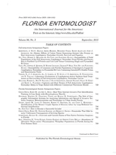
FLORIDA ENTOMOLOGIST
Illuminating the Path of Insect Science and EcologyFLORIDA ENTOMOLOGIST is a prestigious peer-reviewed journal dedicated to the advancement of entomological sciences, published by Walter de Gruyter GmbH. Since its transition to open access in 1994, the journal has become a vital resource for researchers, students, and professionals in the fields of Insect Science and Ecology, Evolution, Behavior, and Systematics. With an impact factor ranking high in its category—Q2 in Insect Science and Q3 in Ecology, Evolution, Behavior and Systematics—the journal showcases significant findings and contributions that shape our understanding of insect biology and its implications for ecological systems. The journal is indexed in Scopus, further establishing its relevance, with current rankings reflecting its competitive standing within Agricultural and Biological Sciences. Published continuously since 1982, FLORIDA ENTOMOLOGIST not only facilitates the dissemination of knowledge among entomologists but also encourages interdisciplinary collaboration, making it an essential publication for anyone invested in the scientific study of insects.